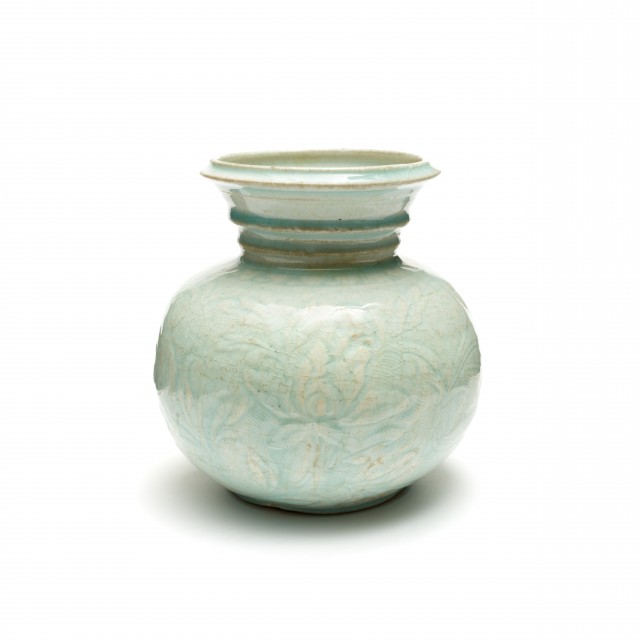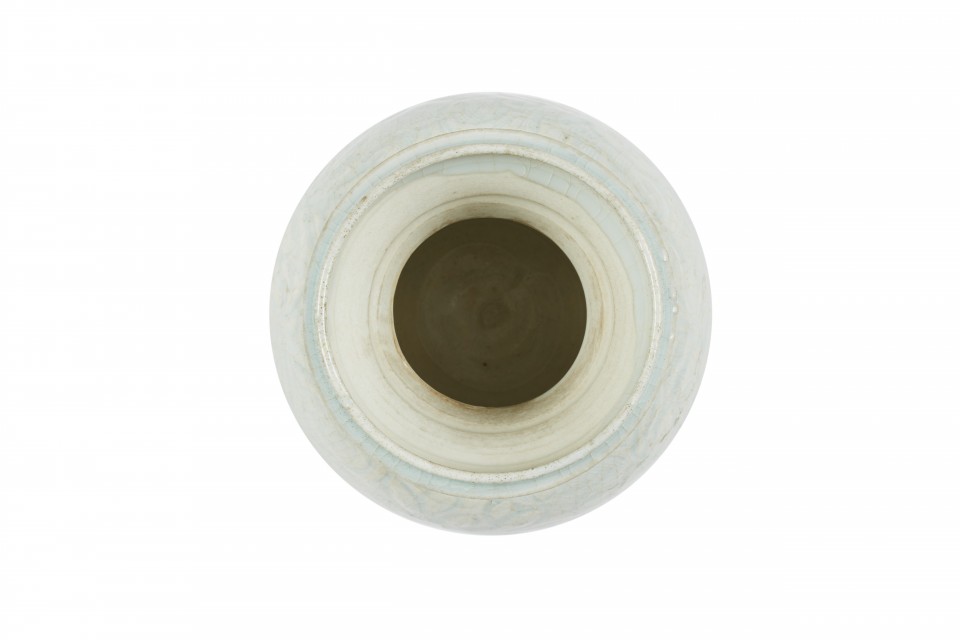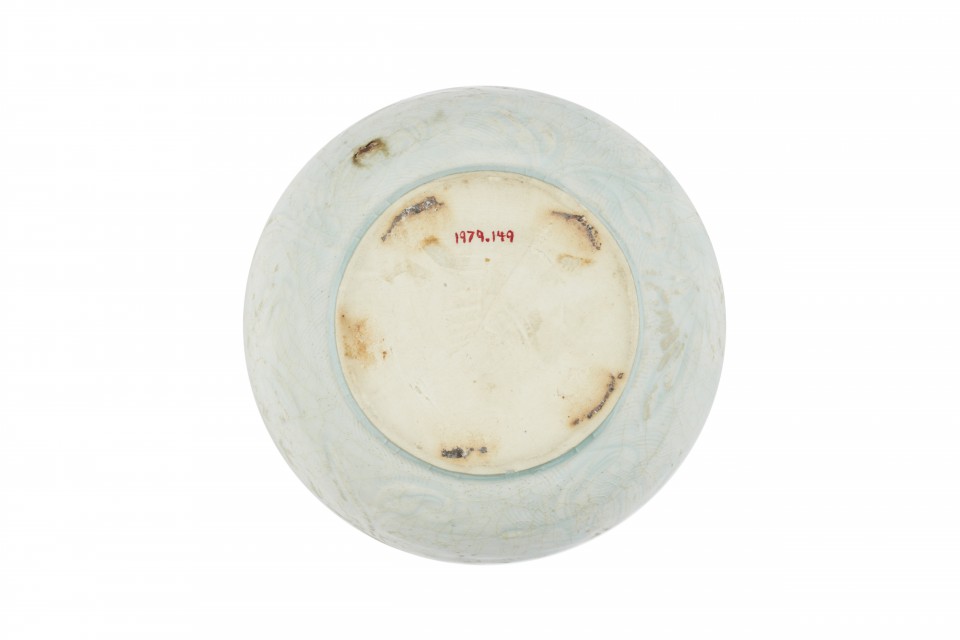
Jar

Photography by Synthescape, Digital image © Asia Society

Photography by Synthescape, Digital image © Asia Society

Photography by Synthescape, Digital image © Asia Society
Jar
13th century
China, Jiangxi Province
Porcelain with carved and combed design under glaze (Qingbai ware)
H. 6 1/2 x Diam. 6 1/8 in. (16.5 x 15.6 cm)
Asia Society, New York: Mr. and Mrs. John D. Rockefeller 3rd Collection, 1979.149
Licensing inquiries
Qingbai wares, produced at several sites in Jiangxi Province, were manufactured over a long period of time, and often for export. The limpid colors of their translucent glazes give these wares their names: qingbai, meaning "blue-white," and yingqing, "shadow-blue." The bulbous shape of this jar is unusual for Qingbai wares. It is enhanced by the lotus, peony, iris, and mallow sprays carved against a background of combed patterns on the body. The earliest Qingbai wares, produced during the 10th and 11th centuries, were made using a local clay that lacked a certain plasticity. By the time this piece was made, a type of clay known as kaolin was mixed with the local clay to create a much greater plasticity. This development during the Southern Song period paved the way for the evolution of porcelain in China during the 14th and 15th centuries and for the eventual spread of the technology throughout the world.



